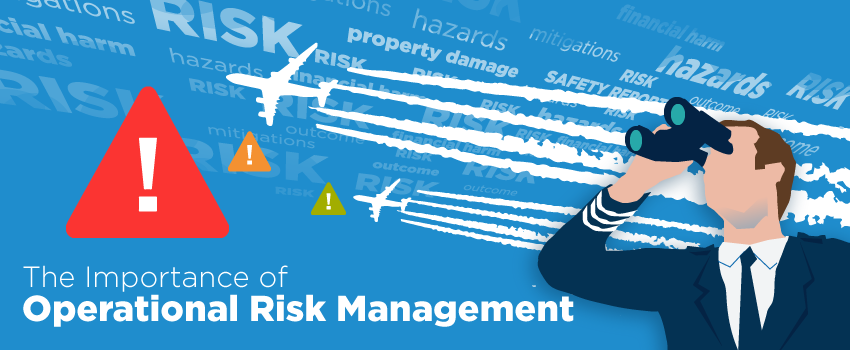The importance of active operational risk management should never be underestimated. As a former Flight Operations Manager, I have attended numerous Safety Meetings (DSAG and SAG) and the most common question is: “Has our risk picture changed in the last few months?” The answer, inevitably, is: “No, our risk register indicates that we have mitigated all risks to as low as reasonably practical.” Whilst this answer is technically correct it is often not a true reflection of the risk levels experienced in an organisation. Great operational risk management requires so much more.
The risk register will indeed demonstrate that any hazard has been assessed correctly and the associated risk has been identified, and, where that risk is intolerable, controls have been put in place to mitigate the risk to as low as reasonably practical. However, is that a true reflection of the corporate risk picture? For example, just how many controls are in place and what drawdown are they making on our available, often limited, resources? Have those controls been implemented correctly and are they truly effective?
Risk Management and Continuous Hazard Identification
As required in ICAO Annex 19 and described in ICAO Document 9859, the cornerstone of any modern Safety Management System (SMS) is continuous hazard identification that feeds into a risk management process. Indeed, Document 9859 has caused a paradigm shift in the way the aviation industry approaches risk management. It has forced the industry to accept that there will always be a degree of risk associated with aviation.
Sources of hazard information include, but are not limited to: Safety Reporting, Quality Audits, Safety Surveys and feedback from 3rd parties such as the Regulators or other operators.
In this process the most important of these sources are safety reports submitted by the workforce with the most effective SMS within organisations with a sound reporting culture in which employees are encouraged to submit hazard/safety reports. After all, it is the main workforce who are exposed to the greatest number of associated hazards. The tricky part is how we identify and assess a hazard and then manage the resulting risk.
Identifying a Hazard
A hazard is a thing or situation that has the potential to cause harm to people or damage to property, reputation or the environment (and also has the potential to cause financial harm). In all environment’s hazards are “things” that should be subject to a risk assessment and if a suitable assessment is not undertaken expensive litigation proceedings may occur.
Risk is a consequence of a hazard
A risk is a state of uncertainty surrounding the potential effects/consequences of a hazard and the likelihood of that effect occurring. It is often referred to as the most credible outcome multiplied by the likelihood of it taking place. It is often difficult to define the “most credible outcome” and even harder to determine the likelihood of it occurring. In general, most risk assessment processes follow a similar pattern namely:
- Identifying that a hazard exists
- Assess the consequences of the hazard occurring
- Grading the severity of the hazard and determining the level of risk
- Review mitigations to reduce the risk to as low as practically possible
- Review the risk regularly and the mitigations in place to ensure the hazard is nullified
Complexity of risk management in aviation
Unfortunately, in the aviation industry, hazard and risk management is much more complex. Extrapolation to the most credible outcome is often difficult and then determining the likelihood is even more problematic. In the early stages of the new risk-based safety management requirements, many operators were struggling to define a robust and repeatable methodology for hazard assessment. Indeed, this issue of risk management is so subjective that EASA set up a working group to investigate how the industry might proceed whilst ensuring that it complied with the requirements of ICAO. The group was called the Airline Risk Management Solutions (ARMS) working group and they published their findings in 2010. Although many airlines now use slightly different tables / matrices than those suggested in the ARMS document, the basic principles are used to this day. Indeed, the measurement of risk and the way it changes over time can be an extremely valuable way to determine the exposure of any organisation.

